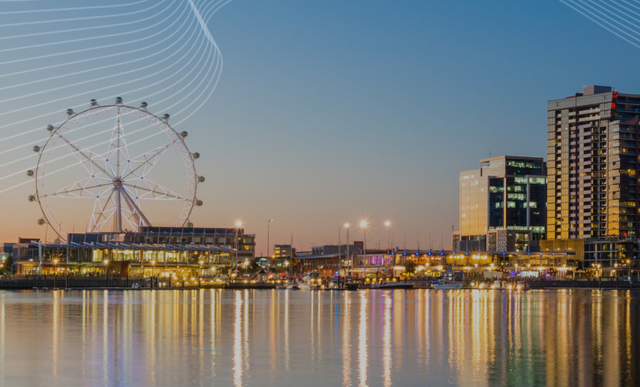Modernized IT Paves the Way for the Experience Economy
by Brianna Shipley, Senior Editor, SAPinsider
Months into the quarantine experienced worldwide due to the COVID-19 crisis, much of the population has been shut in, isolated, and perhaps feeling like they have been repeating the same day over and over, with little variation. This experience is reminiscent of the one played out in the American film Groundhog Day, where the main character, Phil Connors, is trapped in a time loop that forces him to, quite literally, relive the same day (February 2, 1993) again and again. It’s been more than 25 years since we first watched Connors wake up each morning to the despair of endless monotony, but this year, a Super Bowl LIV commercial brought a present-day Connors back to the screen — except this time, he has something new in his day: a shiny orange Jeep.
The ad reveals Connors’ dismal mood completely reversed by the excitement and adventure the new vehicle affords him, and it asks viewers to consider, “Don’t you also want a Jeep that can take you to new places?” It is with this approach of selling an experience that businesses can get ahead of their competitors and entice new and existing customers to engage with them. Before businesses can progress into this new digital age and emerging experience economy, however, they must first modernize their IT infrastructures to ensure that the experience they are promising is also one that they can deliver.
The Best Time to Modernize Your IT Infrastructure Is Now
Digital transformation is expected to only increase in importance, and likely at an accelerated rate as a result of recent global events, which have forced many businesses to quickly pivot to digital models and subscription-based services. SAP customers must be able to react quickly and adapt to new realities with little notice. Under pressure to not only transform but thrive, companies are realizing that their IT resources must drive change.
According to Ivo Totev, Chief Product and Marketing Officer at SUSE, most SAP customers understand the importance of having a secure and reliable IT infrastructure that is always available — it is just a matter of getting there. “When simplified IT infrastructures run seamlessly, organizations can spend more time thinking about their business transformation strategy,” he says. “Adopting next-generation solutions, such as SAP S/4HANA and SAP HANA, is critical for businesses to prosper in this age of digital transformation.”
Having a Linux-based operating system is required for deploying many SAP solutions (a limited number of vendors offer SAP-certified Linux systems, SUSE being one of them), but most businesses’ data centers contain a myriad of operating systems and versions. As a result, Totev says that many customers look at the migration projects toward SAP HANA and SAP S/4HANA as a good time to standardize and expand their Linux footprint beyond SAP workloads. “We invite SAP customers to consider consolidating their legacy operating systems into a modern IT platform comprised of Enterprise Linux, container, and Edge Computing technology capable of not only driving standardization, but that also aims to realize better uptime and higher security — two goals that are top of mind for chief information officers,” he says.
In addition to fulfilling the aforementioned recommendations, the SUSE platform for SAP solutions makes it easy to move applications around, such as from on premise to the cloud. It further provides powerful tools that automate such migrations and reduce the risk and effort, making it easy to run SAP solutions on premise, in the cloud, and in hybrid environments.
The concept of Linux and containers can be compared to how items packed together in a suitcase are much easier to load into cars, trucks, planes, or ships and transport — as opposed to trying to move different goods around individually. Since many companies have not yet moved to the cloud, this is an in-demand capability, says Totev.
Viewing SAP HANA and SAP S/4HANA as Accelerators into the Experience Economy
Many SAP customers are keen to move to SAP HANA and SAP S/4HANA as smoothly as possible in order to remain competitive and drive their business transformation agenda. Due to impacts on business continuity caused by recent global events, however, the migration is now urgent for a second reason: the need for flexibility when adjusting to the realities imposed by the COVID-19 crisis — an adaptation that Totev says will likely accelerate the move into the experience economy. Even before these events, he says, customer interest and expectations were moving away from a product mindset and toward the next level — experience. “Starbucks, for example, does not compete on the price of a cup of coffee because it is not just selling coffee — it has differentiated itself in the market by selling a consistent and engaging experience,” he says.
SAP is helping customers to provide great experiences through Qualtrics, which helps measure customer experiences and deliver the right insights and recommendations about how to improve. Implementing modern solutions is becoming more essential for businesses to create experiences that can compete in today’s economy. “Let’s say you are a manufacturer that wants to start selling products in a service-based model with subscriptions,” Totev suggests. “If your finance system is not capable of dealing with subscriptions, then you may be held back.”
 — Ivo Totev, Chief Product and Marketing Officer, SUSE
— Ivo Totev, Chief Product and Marketing Officer, SUSE
Food and beverage companies are a prime example of an industry that can benefit from getting ahead in the experience economy by moving to a digital environment. Pre-COVID-19, many of these companies manufactured their products and sold them through stores, requiring customers to buy the products in person. In response to increased online shopping, food and beverage companies have started to seek direct channels where customers can buy certain products or supplies online. “These companies are looking to establish, in parallel with large retailers, their own channels,” Totev says. “Having a solution managing the production, logistics, and shipment to retailers is one thing, but having your own digital channel and supply chain to the end consumers is a very different thing. In this particular scenario, the business needs modern systems such as SAP Commerce Cloud and SAP S/4HANA to accomplish this change in business model.”
In addition to a heightened need for flexibility, the importance of data analysis nearly doubled overnight in response to the pandemic, causing organizations to focus more on understanding and predicting customer behavior so they can better serve customer needs. Emerging technologies such as machine learning, Internet of Things, and artificial intelligence support the level of data analysis that is needed for businesses to remain competitive in today’s digital world, and modernized IT environments have become a prerequisite for capitalizing on them.
Setting the Stage for Future Experience Economy Masters
SAP is seeing a trend in how businesses are analyzing and integrating experience and operational data in particular to become “masters of the experience economy.” The company found four common traits among organizations that are creating value in the experience economy and seeing better financial results than their peers. These traits have been identified by SAP as a means for businesses to get ahead, and include having the ability to:
- Integrate disconnected data as a whole
- Combine experience and operational data to advance business goals
- Automate operations to uncover data insights
- Remove silos by modernizing IT
Creating the best and most unique experience for the customer and the employee by taking an integrative approach to data is evolving, requiring businesses to shift their mindset in multiple ways. As a result, companies that are just beginning to invest in intelligent technologies are already behind those that are exploiting these technologies to embrace initiatives around experience management. Totev says that SUSE’s solutions and services can help businesses prepare their IT infrastructures so they can support the intelligent technologies and level of data analysis needed to prevent them from falling behind.
A leading wood-based materials manufacturer, for example, needed to modernize its business processes in order to capture new opportunities based on increased demand. After deploying SAP HANA on SUSE Linux Enterprise Server for SAP Applications and SUSE Manager, the company experienced significant improvement in its analytics performance and insight into its operational data. With a modernized infrastructure, the company’s IT team can now take full advantage of its business data, which has allowed for data-driven decision making and growth opportunities.
For those companies that have not migrated already, laying the foundation for SAP S/4HANA is one way they can — and should — prepare for the experience economy, according to Totev. For instance, Prague’s public transit company took the first step to laying this foundation by migrating its database to SAP HANA running on SUSE Linux Enterprise Server for SAP Applications. The public transit company now experiences high availability, optimal performance, and easy management of several mission-critical SAP workloads.
Taking a Holistic Approach to Modernizing Your Infrastructure
To prepare for the experience economy, businesses need to modernize their entire IT infrastructure — not just the components related to their SAP S/4HANA migration, according to Totev. He says that the move to the cloud will be even more accelerated following the COVID-19 crisis — however, despite this pressure, customers may want to keep some sensitive data on premise for various reasons, such as keeping the information within geographic boundaries. “This means hybrid and multi-cloud environments will be necessary in several cases, and because the cloud/hybrid challenge will not go away any time soon (meaning that two or three separate environments will exist and need to be managed accordingly), customers will need to have a layer of IT infrastructure that makes the on-premise and cloud environments look alike,” he says. “During a migration project to SAP S/4HANA or SAP HANA is a great time to look at your overall IT infrastructure and modernize it.”
What are you waiting for? Learn more about how running your SAP solutions on SUSE can support your digital transformation journey.








